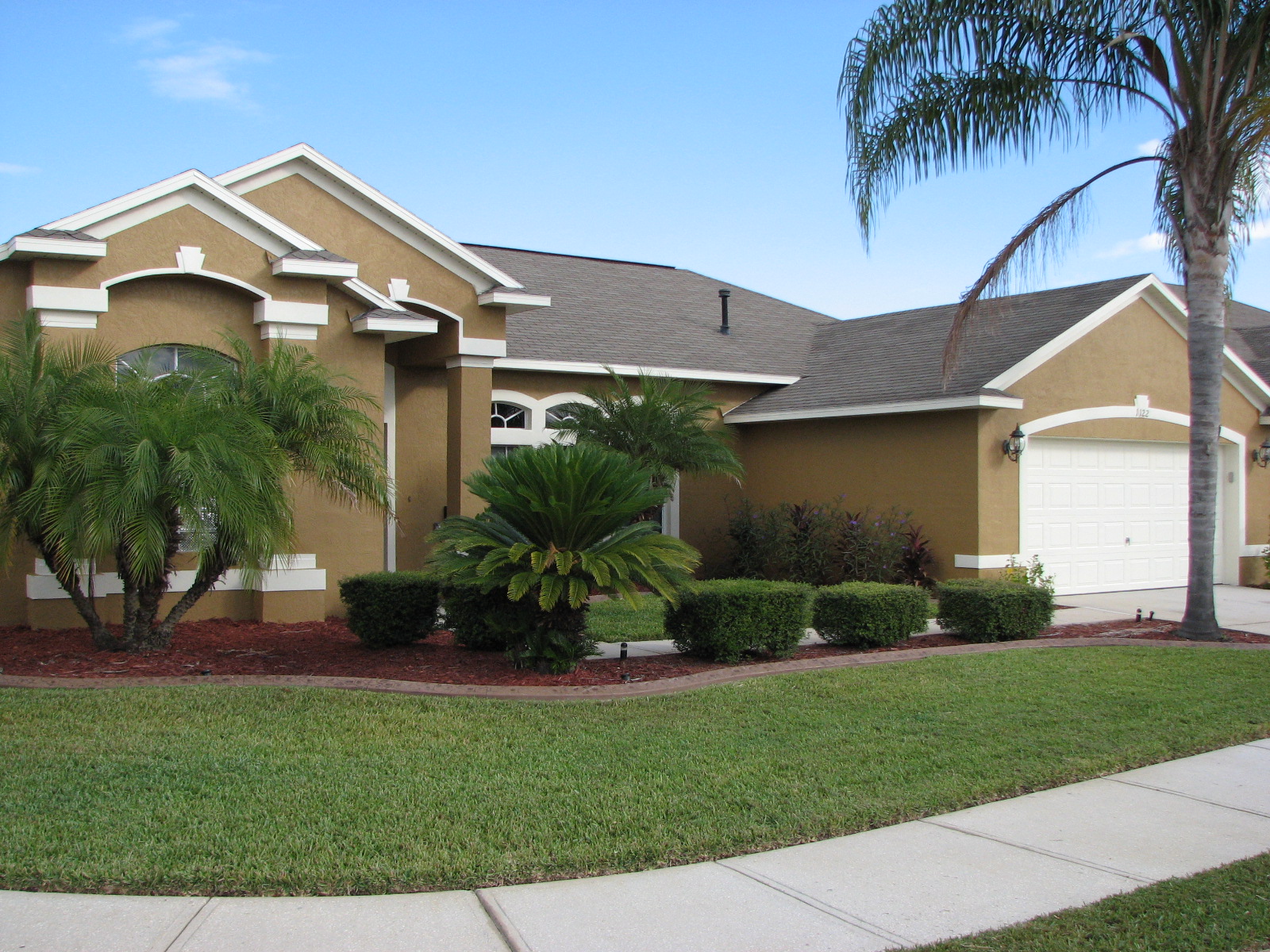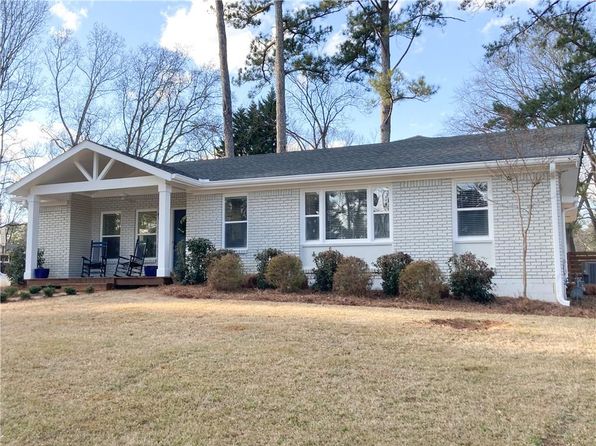
Stain needs to soak into the wood to preserve it, and primer can prevent it from penetrating. The primer coat is an important layer because it seals any exposed wood and provides a good adhesive layer for the finish coats. If the existing paint is in relatively good condition and there won’t be a big change in color, then spot-priming is all that is needed. If the house hasn’t been painted for many years, or there will be a big change in the color, then priming the entire house is necessary. Your options are unlimited when choosing your home’s new paint color.
Clean All Exterior Surfaces
Visit your local Benjamin Moore store or contact Customer Support. Caulk between one piece of siding to the next and in between flashing (the metal strips that keep water out). The smoother your surface, the more uniform your paint job will look.
Tools
From traditional to modern, these exterior paint color schemes will instantly boost your home's curb appeal. If you don’t fancy doing this job, check out our exterior painting cost guide, which breaks down typical DIY costs versus hiring pros. Smooth masonry paints deliver a silky finish, whereas textured paints are better for bumpy surfaces or covering recently repaired cracks. For example, the use of a water-based latex paint over existing alkyd or oil-based paint may lead to the old paint detaching. And if two topcoats are used (recommended for new construction), the second should go on within two weeks of the first.
16 Exterior Trends That Will Boost Your Curb Appeal In 2024 - Southern Living
16 Exterior Trends That Will Boost Your Curb Appeal In 2024.
Posted: Mon, 08 Jan 2024 08:00:00 GMT [source]
Avoid These Common Exterior Painting Problems
Start your preparation by running a soft long-handled brush over every part of the wall, working from the top down. You can only achieve a nice finish if your walls are in top condition. For this reason, the first two steps focus on preparation. If you do decide to paint your house exterior yourself, then safety is paramount. As well as ensuring you wear protective gear to prevent the inhalation of dust and fumes, and irritation from splashed paint, make sure you have the right equipment for the job. If you are in good physical shape and confident at painting, then you can paint the exterior of your house yourself.

The cost of an interior paint job varies depending on a few key factors, beginning with your location. Certain parts of the country charge less for labor, and this affects the cost. Name-brand paints with certain features, such as high gloss, could cost more. Some professionals use a paint sprayer indoors, but this is typically reserved for larger projects or new homes when the homeowner isn’t present. Sprayers create odors and fumes that require ventilation, Krall says. Red and blue can look elegant if you select deep, rich shades rather than vibrant ones.
Apply the Caulk
If too much paint builds up under the bristles, threatening to spill across the line, sweep the brush away from the line. Then go back up to the top of the stroke and draw down again, moving the paint closer to the line. They’re caused by painting over dried paint — in essence, adding another coat. Once you’ve got a small area covered, you’re ready for Step Two, laying off the paint (Photo 3).
Remove Unpainted Items
Use decorators tape to mask off any areas not to be painted, such as doors, window frames, woodwork and guttering. Try masking the frame of the door, separately from the door itself, so you can still go indoors and out. The best method for covering a wall is to blend horizontal and vertical strokes to avoid any ‘grain’ being visible in the paint. Experts often claim it’s easier to work from right to left if you’re right-handed, but work in whatever direction you feel most comfortable. You’ll need roughly five litres of masonry paint to cover 75 square metres of wall, but a second coat will halve the achievable coverage.
How Much Does It Cost to Paint a House?
Test out colors, just like you do for interior paint jobs. If you don't want to paint many color swatches directly on your house, apply the paint to large pieces of foam core. Observe how the colors look during different times of the day.
How much of this must be done will depend entirely on the current condition of the existing paint job. It is not typically necessary to strip away all the existing paint. Your goal here is just to remove any paint that is loose and peeling.
Southern Designers Predict These Will Be The Biggest Exterior Home Trends In 2024 - Southern Living
Southern Designers Predict These Will Be The Biggest Exterior Home Trends In 2024.
Posted: Tue, 07 Nov 2023 08:00:00 GMT [source]
If you’re changing paint colors, you’ll have to be OK with your house being different colors until all the walls are done, four years down the road. My wall took a little extra time because of my cedar shakes. To make the job easier, I invested in an airless paint gun. After a while, painted houses start to reveal wear and tear, so once in a while, doing a refreshing exterior house-painting project can bring back your home’s vibrancy. The average cost to paint a house is between $1,811 and $4,435, with a national average of $3,087.
We recommend buying paint with a slight sheen, satin or eggshell. It’s more fade resistant and easier to clean than flat paint. The most common mistake beginning painters make is spending too much time and effort laying on the paint. When painting a home built before 1978, testing for the presence of lead paint is an essential step, says Sharp. Lead paint can become a hazard when disturbed during scraping and painting.
If you just bought a new house, painting the exterior could hinder your unpacking efforts and settle in. Fitting such a big project into a schedule that has little downtime can be challenging. We’ve got you covered with our essential guide packed with everything you need to know about exterior home painting. Use white paint to highlight shutters, and let the star of the show be the front door painted in a plum color. The deep purple, like on this Berkshires ranch house of designer Annie Selke, has a lasting warmth that’ll make anyone who enters feel welcome.
We may earn commission on some of the items you choose to buy. Lisa is Deputy Editor of Style at Home magazine and regularly contributes to sister title Ideal Home. Homes and interiors have always been a passion and she never tires of nosying around gorgeous homes, whether on TV, online, in print or in person. Sign up to our newsletter for style and decor inspiration, house makeovers, project advice and more. Consider variation to highlight different features, such as timber framing, or even different storeys. Lighter colors can work well on upper storeys with darker colors lower down.
“Interior paint will help to keep cleaning and maintenance costs down because it provides a much easier surface to clean than one that is chipped and deteriorating,” Walker says. Then add subtle contrast with a distinct black, as designer Shazalynn Cavin Winfrey did for her Texas home by painting the windows and doors in Jet Black by Benjamin Moore. The former parsonage's terra-cotta details and surrounding greenery complete the inviting scene. By evaluating paint colors at different times of day, you’ll get a better sense of whether or not you’ll like them in the long run. Even a little cloud cover can completely change how a color looks, turning it from a nice sage green to more of a '70s avocado.
Poulos says exterior paint jobs typically take about a week. Dabble in subtle color blocking by painting the trim in turquoise, the window shutters in royal blue, and the siding in white. For this São Paulo home, designer Maria Augusta “Guta” Louro chose Calca Jeans on the window shutters and Banho de Espuma on the door and window frames, both from Suvinil.












